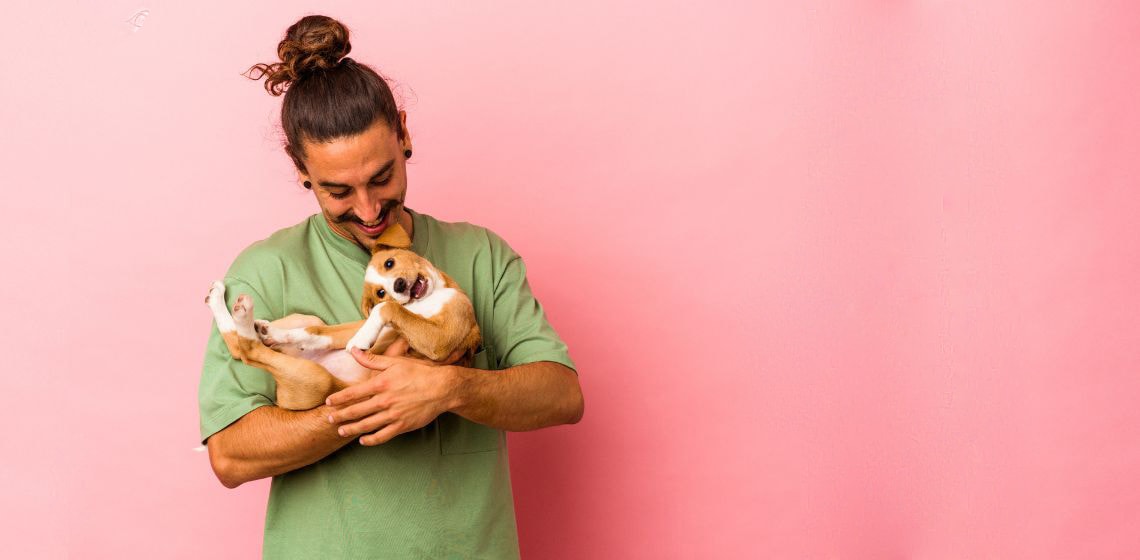Table of Contents
What is Swelling of the Salivary Gland?
A salivary mucocele (also known as a scialoscele), or a dog swollen salivary gland, occurs when a salivary gland or duct is damaged and leaks saliva into the surrounding tissue of the mouth or neck, resulting in a soft, painless mass or swelling. Dogs have multiple salivary glands, which produce fluid that aids in the digestion and lubrication of food, and protects the mucus membranes of the mouth.Salivary Gland Symptoms
Symptoms and clinical signs of a salivary mucocele and systemic infection include:- A soft, non-painful mass on the dog’s head, neck area, or mouth, that grows slowly over time
- Depending on the location of the swollen area, some dogs may experience difficulty eating, chewing, or swallowing.
- In severe cases, a pharyngeal mucocele can lead to difficulty breathing and respiratory distress, which can affect your pet health.
- Cervical mucocele – Causes swelling around the upper neck or lower jaw or cervical region
- Sublingual mucocele (ranula) – Causes swelling in the mouth, next to or under the tongue, which can cause trouble eating
- Pharyngeal mucocele – Causes swelling within the throat
- Zygomatic mucocele – Causes swelling below the eye
What Else Can Cause Swelling in Your Dog’s Neck?
Other conditions that may cause a salivary mucocele mass in the same areas as a salivary duct or gland include:- Enlarged lymph nodes – Dogs have lymph nodes in multiple areas of their body, including under the jaw (submandibular lymph nodes). Some or all of these lymph nodes can become enlarged in response to other diseases, such as infection or cancer.
- Dental disease – Dental disease can cause enlarged lymph nodes as well as tooth root abscess, which can often appear as a swelling around the cheek or under the eye.
- Abscess – A wound or trauma can cause a swelling containing purulent (pus) material.
- Other type of mass or growth – Dogs can get lumps and bumps anywhere on their bodies. These may be benign (like lipomas – fatty growths) or malignant.
- Other issue with salivary gland – such as salivary gland infection, salivary gland tumors, or sialadenosis
What Causes Salivary Mucocele in Dogs?
Damage to the salivary gland or duct may be caused by several factors, including chewing on something hard or sharp, use of prong or choke collars, or other penetrating wounds or trauma like a bite wound. Often the inciting cause of a salivary mucocele is never known. There also appears to be a breed disposition with German Shepherds, Dachshunds, and Miniature Poodles being at higher risk of this condition. Once a salivary gland or duct is damaged, saliva begins to leak into the surrounding tissues causing inflammation. Without treatment, the swelling will continue to get larger due to continued leakage and associated inflammation of the salivary gland lobules.How is Salivary Mucocele Diagnosed?
Diagnosis of a salivary mucocele is generally based on history, physical exam, and fine needle aspirate. This involves inserting a needle into the swelling to collect a sample of fluid for evaluation under the microscope. The fluid accumulation will usually appear thick and sticky, like saliva. Depending on the location of the mucocele, your vet may also need to perform a thorough oral exam under sedation to get a better look at the mouth and throat. Your vet may also recommend further testing along with a physical examination, including bloodwork, urinalysis, and possibly x-rays, to rule out other conditions and make sure that they are healthy enough to undergo a surgical procedure.Treatment for Swollen Glands
The recommended treatment for a salivary mucocele in dogs involves surgical excision to ensure removal of the affected salivary gland or glands (sialoadenectomy). Depending on which gland is affected and the surgical site involved, you may be referred to a specialist for this highly technical surgical removal. Marsupialization is another possible surgical procedure used to help treat sublingual mucoceles, which aims to create a new opening for accumulated saliva to drain into the mouth. If surgery is not possible when treating a mucocele in dogs, your vet may attempt to remove the accumulated saliva with a fine needle aspiration. This is rarely successful and the swelling will likely recur within the next few weeks or months as it becomes fluid filled again. Infection is a possible side effect of repeatedly draining the fluid.Recovery From Swelling of the Sublingual Salivary Glands in Dogs
Surgical removal is highly successful in treating salivary mucoceles, and most dogs go on to live a completely normal life. Like all surgeries, there are possible complications from the surgery itself or from anesthesia, which should be discussed with your vet. A drain may be placed to allow fluid removal from the site during healing of the damaged salivary gland and to avoid pain. Your dog will likely be discharged with an e-collar, pain medications, and possibly antibiotics to ensure proper healing from the affected gland. In many cases you may not be able to prevent a salivary mucocele, however, it is prudent to avoid prong collars, provide safe chew toys, and supervise your dog to avoid bite wounds. Contact your vet if you are concerned that your dog may have an enlarged salivary gland or other issues as they can conduct a physical examination.In some cases, a salivary mucocele in dogs could be fatal if the swelling becomes large enough to disrupt your dog’s breathing, leading to respiratory distress while affecting the surrounding tissue.
This is especially true for pharyngeal mucoceles, which cause swelling in the back of the throat.
No, this condition requires veterinary treatment and likely removal of the affected gland or glands.
If the affected salivary glands are left untreated, the swelling will continue to enlarge, as more saliva continues to leak into surrounding tissues causing inflammation.
The most common cause of enlarged salivary glands is a salivary mucocele.
This is often caused by trauma to the salivary gland or duct from a wound, chewing on hard or sharp objects, using prong collars, etc.
Other less common causes of enlarged salivary glands include sialadenosis (a neurological condition), infection, or inflammation.
Enlarged lymph nodes, dental disease in the dog’s mouth, abscesses, and other types of masses may cause swelling around a dog’s neck.

Liza is a veterinarian who graduated from MSU CVM in 2013 and spent five years working in small animal practice. She loved working with dogs and cats and educating owners on all aspects of veterinary medicine, especially animal behavior and dermatology. She has since transitioned to remote work to be able to spend more time at home with her husband, two young kids, and two cats. She is thrilled to be able to combine her passions for veterinary medicine and writing. She is licensed as a veterinarian in Washington State.








